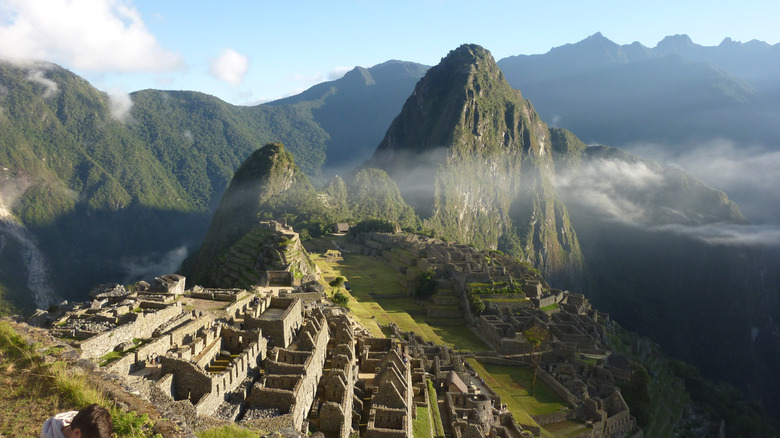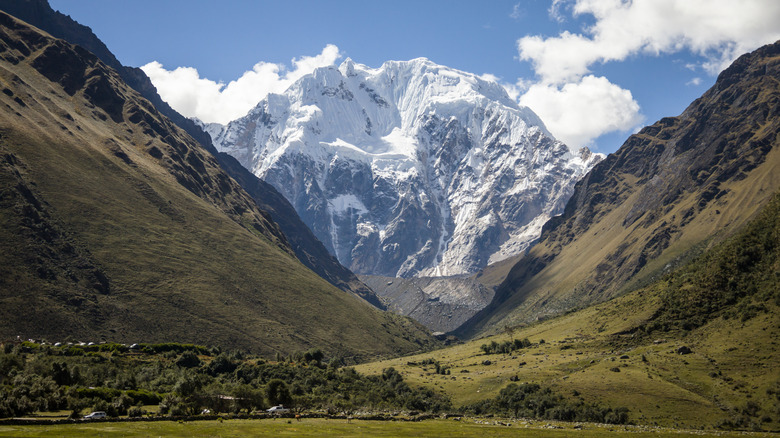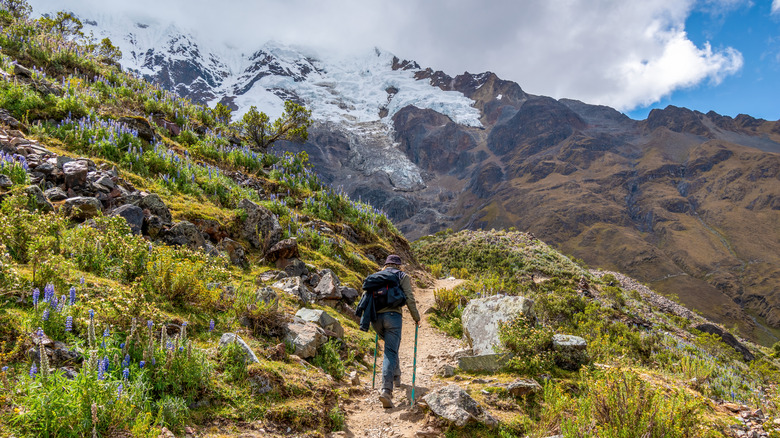Avoid The Over-Touristed Inca Trail To Machu Picchu For This Gorgeous Uncrowded Alternative
Machu Picchu remains at the top of almost every traveler's bucket list for good reason. The 600-year-old Incan citadel is breathtaking, exploding from the Peruvian cloud forest to lure in 1.6 million visitors a year. But while the vast majority of those visitors arrive by train or bus from Cusco — the wildly affordable gateway to these breathtaking hikes — about 25,000 of them opt for the scenic route, taking as long as five days to follow the famous Inca Trail to the site. Iconic in its own right, the Inca Trail is a spectacular 26-mile segment of what was once a road system spanning thousands of miles. It's spectacular and puts travelers in the shoes of the Incan pilgrims who once traversed the same paths. But even with the government imposing daily hiker limits, its popularity shows. Campsites can be crowded, and serene moments in the Andean mountains can be ruined by massive groups passing through.
But there is an alternative — Salkantay. The epic and uncrowded Salkantay route skirts around the Inca Trail's valley, leading hikers through alpine landscapes before plummeting into the cloud forest below. It offers a different type of adventure and the solitude so many on the Inca Trail crave.
What is the Salkantay Route?
The Salkantay route is an alternative route to Machu Picchu that is not subject to the same permit rules and overcrowding issues as the Inca Trail. Instead of following the stone road created by the Incas centuries ago, it traces old trade routes through the mountains towards the Salkantay Pass (located at over 15,000 feet above sea level), the highest point of the trek. Even the name Salkantay means "Wild Mountain" in the local Quechua language, giving a hint at the adventures the trail holds.
Wherever you're coming from, Cusco will be your gateway to the region. Starting in the nearby town of Mollepata, the trek lasts four to five days with a considerably longer distance of up to 46 miles, depending on the specific route. The trail leads up through the stunning Humantay Lake, over the pass itself, and then down through picturesque coffee plantations and other Incan ruins before finishing at Aguas Calientes, the tourist town beneath Machu Picchu. Most visitors spend the night here before heading to the site in the morning.
With as few as 50 people starting the trek each day, you can expect a quieter experience, both on the trail and in your campsites. Using a guide or tour company is strongly recommended, but it's possible to hike the Salkantay route unsupervised, which could be immensely attractive to more experienced hikers. You should note that while it's not a technically complex route, it's regarded as more difficult than the Inca Trail — something to consider if you're braving it without a guide.
Should you go for the Salkantay or the Inca Trail?
From a financial and practical perspective, the Salkantay route wins every time. With no permits to consider and fewer tourists, it's often possible to book tour groups last minute at a fraction of the price of the Inca Trail. Solo travelers may get lucky with last-minute space on the latter, but can still expect to pay a premium for the privilege.
Each route has its pros and cons from an experiential standpoint. The Salkantay route places a strong emphasis on the stunning Andean landscape and the sense of serenity found in the uncrowded atmosphere. Those looking for a more physical challenge or independent hiking will find a lot of value there. The Inca Trail, on the other hand, is a remarkable route that offers more from a historical and cultural perspective. Hikers wind through multiple Incan ruins before entering Machu Picchu through the Sun Gate, the way Incan pilgrims would have done. You'll know which speaks more strongly to you.
It's worth considering the impact your visit can have on the region, too. The Inca Trail's restrictive regulations are a result of over-tourism, but the lack of rules on the Salkantay route means some companies may be flouting their responsibilities to the environment and local people. Do your research and spot any signs of over-tourism on any trek to ensure you're leaving Machu Picchu and its surrounding valleys the way you found them.


